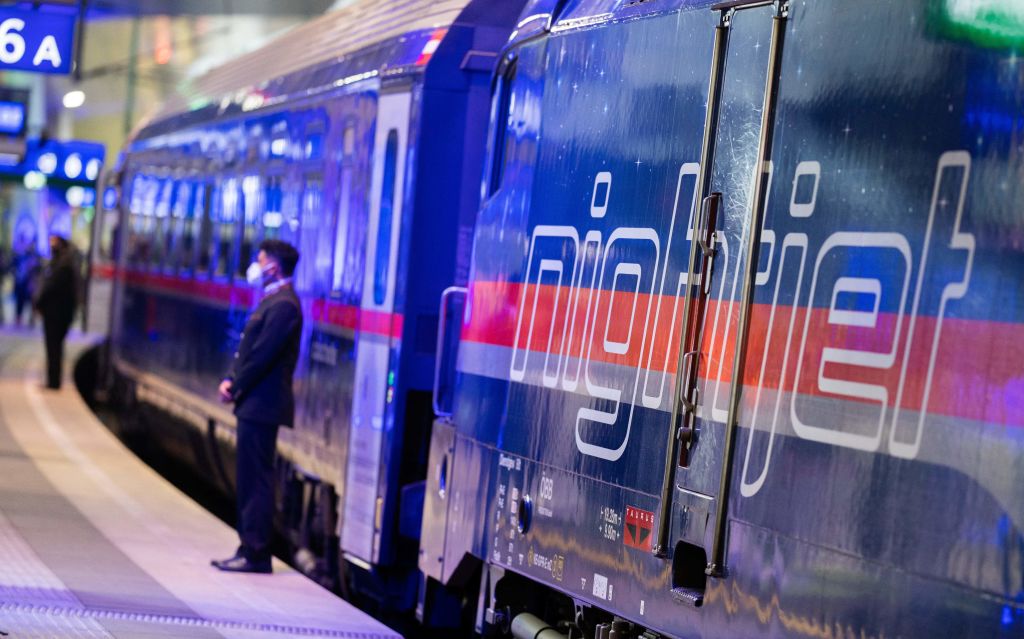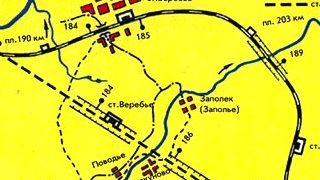Exotic and sustainable, night trains are coming back to Europe

- This map of a “Euro Night Sprinter” rail network looks amazing, but it is not real — at least not yet.
- It is a proposal by the German Greens, who want a Europe-wide network of sleeper trains.
- That would be a sustainable, exotic, and comfortable way to travel. So perhaps it will come true.
“If you build it, they will come”. The German Green Party has its own take on that famous movie quote*: “If you map it, they will build it.”

In this case, it’s a trans-European night train network that would consist of 40 international long-distance lines. By 2030, it would connect more than 200 cities and places across Europe, from Lisbon in the west to Moscow in the east, and from Helsinki in the north to Málaga in the south.
Exotic visions of night train journeys
While that already sounds impressive, this map makes that prospect look positively exciting. Presented as a straight-line diagram in the style of Harry Beck’s iconic design for the London Underground, it shows Europe as an invitingly neat assemblage of overnight connections and next-day destinations.
Dubbed Euro Night Sprinter, the continent-spanning rail map conjures up exotic visions of night train journeys — drifting off to sleep as the N39 train pulls out of Madrid, waking up as it glides into Paris. Or vice versa. Or any other pair of cities connected by N-lines of the same color on this map.
So, will you ever take a Euro Night Sprinter from Bucharest to Vienna, Amsterdam to Marseille, or London to Munich? Well, about that…

The map is less of an actual plan and more like the proverbial carrot. It shows European mobility users — and more pointedly, German voters — what a more sustainable transport system could look like.
Disastrous floods in Germany and apocalyptic fires in Greece have helped cement the conviction across Europe that climate change has started, is catastrophic, and needs to be mitigated. That requires massive cuts in the emission of CO2 and other greenhouse gases. Transport is a major emitter, notably from road and air. So, that means no more zipping across Europe in your gas-guzzling SUV or plane-hopping from city to city.
Zipping across Europe at 250 km/h
Rather than hammer on those no-nos, this map, and the proposal it illustrates, focuses instead on a positive alternative. The map was first published in the run-up to the German elections in September, as part of a proposal by the German Greens for a Europe-wide network of night trains. Some key points:
- Such a network would require a unified control and coordination system for Europe’s various national rail networks, as requested by the European Rail Agency. This would be along the lines of Eurocontrol, the continent’s air traffic agency.
- The network would need night trains traveling comfortably and quietly across Europe at 200 to 250 km/h (125 to 155 mph), with necessary upgrades to the rolling stock financed by the European Investment Bank. Using Dijkstra’s algorithm, the Greens have calculated that most journeys on this map would take between 9 and 14 hours.
- Also essential: a uniform, user-friendly booking platform, allowing customers to book a multinational trip on a single ticket, which currently is often impossible.
- The network would also need investments to upgrade old rail lines and develop new ones. One current example is the Brenner Base Tunnel, scheduled for completion in 2032, which will reduce the journey time by rail from Berlin to Rome from 14 to 12 hours.
- Last but not least, for the rail network to function, there needs to be an end to tax breaks for airlines. That is essential to make travel by rail more competitive.
Germany’s rail network would be a central and substantial part of the Euro Night Sprinter network. But obviously, its creation would require a pan-European effort.
“We want to create a climate-friendly, comfortable, affordable, and accessible train network across Europe,” said Terry Reintke, Member of the European Parliament for the German Greens. “That is why the European Commission and the member states have to step up the efforts to build a European network for night trains.”

When it comes to sustainability, rail certainly has its benefits. According to a recent study by OBC Transeuropa that was commissioned by Greenpeace:
- fully one third (34 percent) of the EU’s busiest 150 short-haul flights have train alternatives with journey times below six hours;
- yet only just over a quarter (27 percent) of those flights have direct night train alternatives.
Earlier surveys show 62 percent of Europeans would support a ban on short-haul flights, and significant majorities in various European countries want to take more night trains instead — if reasonably priced.
More sustainable, but also more relaxed
Greenpeace calculated that banning short-haul flights in the EU and shifting to rail where alternatives under six hours already exist would cut emissions by 3.5 million tons of CO2 equivalents each year. Given enough investment in rail, the EU could replace almost all of its top 250 short-haul flights by rail travel, saving 23.4 million tons of CO2 equivalents per year, which is roughly the annual CO2 emissions of Croatia.
While night trains are still rarer than they used to be, they are making a comeback across Europe. Mostly phased out decades ago because of easier air and road travel, they are now being phased in again precisely because they are climate-friendly alternatives to planes and cars.
But sustainability is not the only argument in favor of train travel. For many, it is a more relaxed way of getting from point A to point B. Passengers avoid out-of-town airports and instead depart from and arrive at city centers. Or they avoid the stress of having to manually negotiate hundreds of miles of road traffic.
So perhaps this utopian map of Euro Night Sprinters racing across the continent may turn out to be a map of the future yet.
Strange Maps #1116
Got a strange map? Let me know at strangemaps@gmail.com.
Follow Strange Maps on Twitter and Facebook.
*Note: It’s a misquote from Field of Dreams (1989), in which Kevin Costner’s character hears a voice say, “If you build it, he will come,” the person in question being baseball hero Shoeless Joe Jackson.





